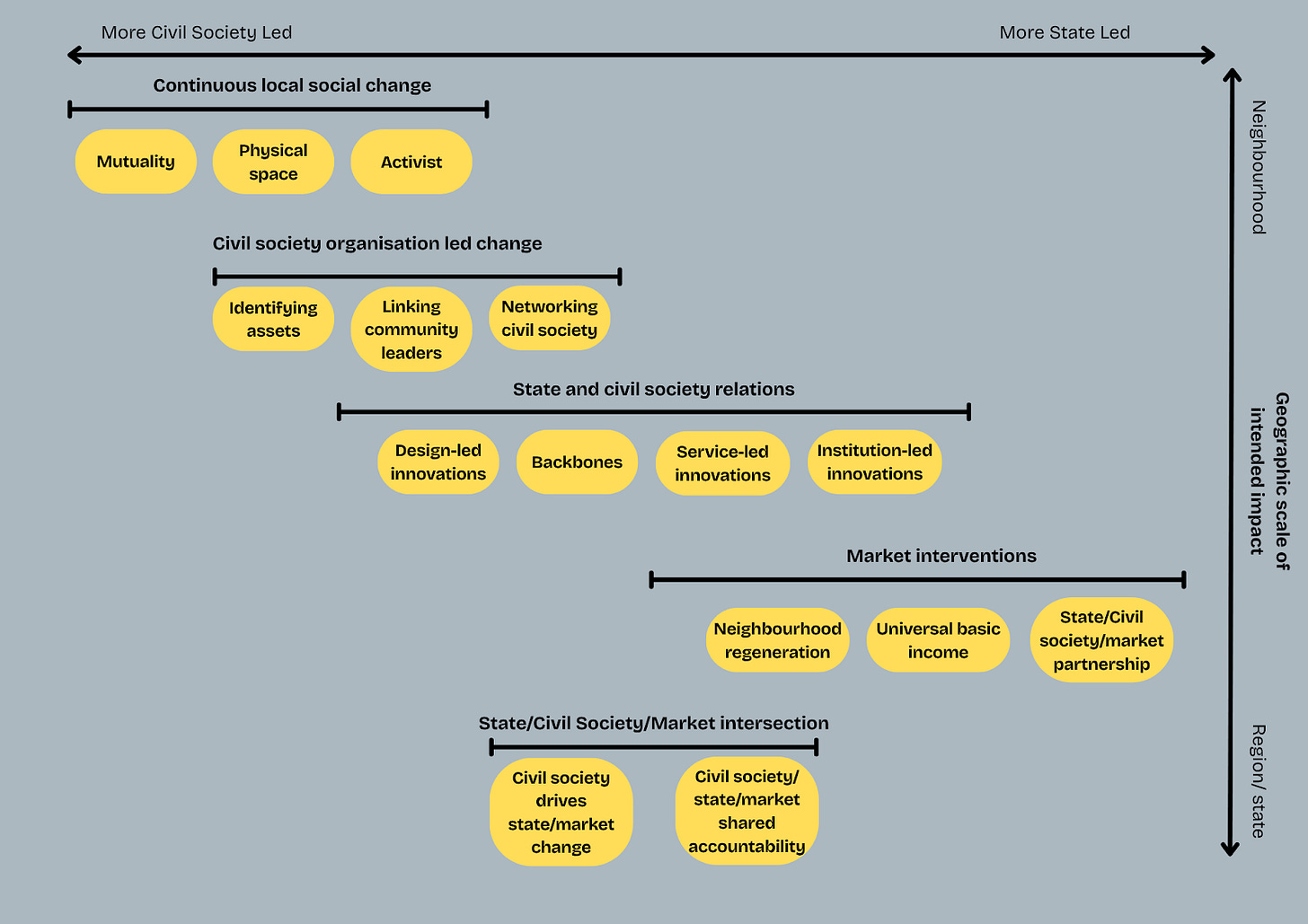We can summarise the five categories in the following diagram. We see this as a working model, and think it broadly holds that from a descriptive perspective. We will adapt the model in the light of feedback and further analysis of the literature.
It is helpful to reflect on the purpose of the taxonomy that we have created using the approach descirbed in this Substack to date. We want to understand variations in the different mechanisms of place-based change. We want to use that understanding to support the field to make better use of evidence.
The diagram describes the five categories summarised in the previous five entries to the Substack. There is some logic to the placement. The entries to the left are closer to the community. The entries to the right are closer to state. The entries at the top are smaller in scale in terms of their intended impact, those at the bottom larger in scale in terms of intended impact. We know there are many exceptions, especially where there is intended impact at both a hyperlocal and a local authority scale, for example, but the overall pattern seems true.
In each category, we have highlighted the mechanisms that we have seen within this category. We think this is a useful starting point, but much more work can and should be done on exploring those mechanisms in greater detail, which will likely see them change, be added to, and influence our understanding of the category as a whole.
What does this mean for evidence, and definition? Before we answer that question, in the next post we will reflect on the strengths and weaknesses of the classification, as we currently understand it.






The more I sit with these typologies, the more I am convinced that 'Market Interventions' as a stand alone model does not fit here. Market Interventions on their own are 'top down' and often 'done to' communities, the exact opposite of place based change. Examples of when this is not the case have state/civil society involvement in some way, which you have included in the above diagram, however they then resemble the fifth typology 'State/Civil Society/Market Intersection'. Which leads me back to my original conclusion. Are there any examples of Market Interventions (with no state/civil society involvement) that we can consider to be real place based change?